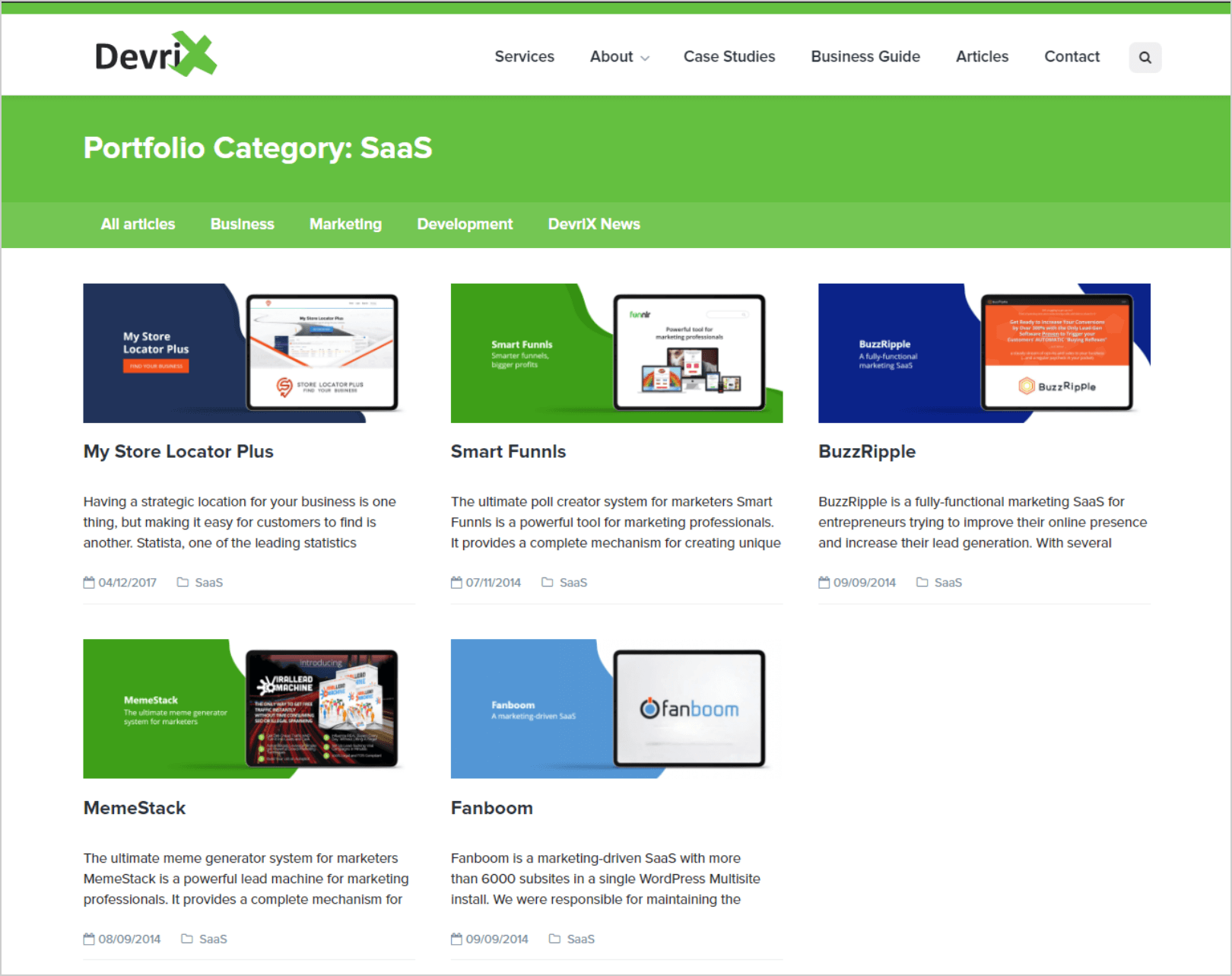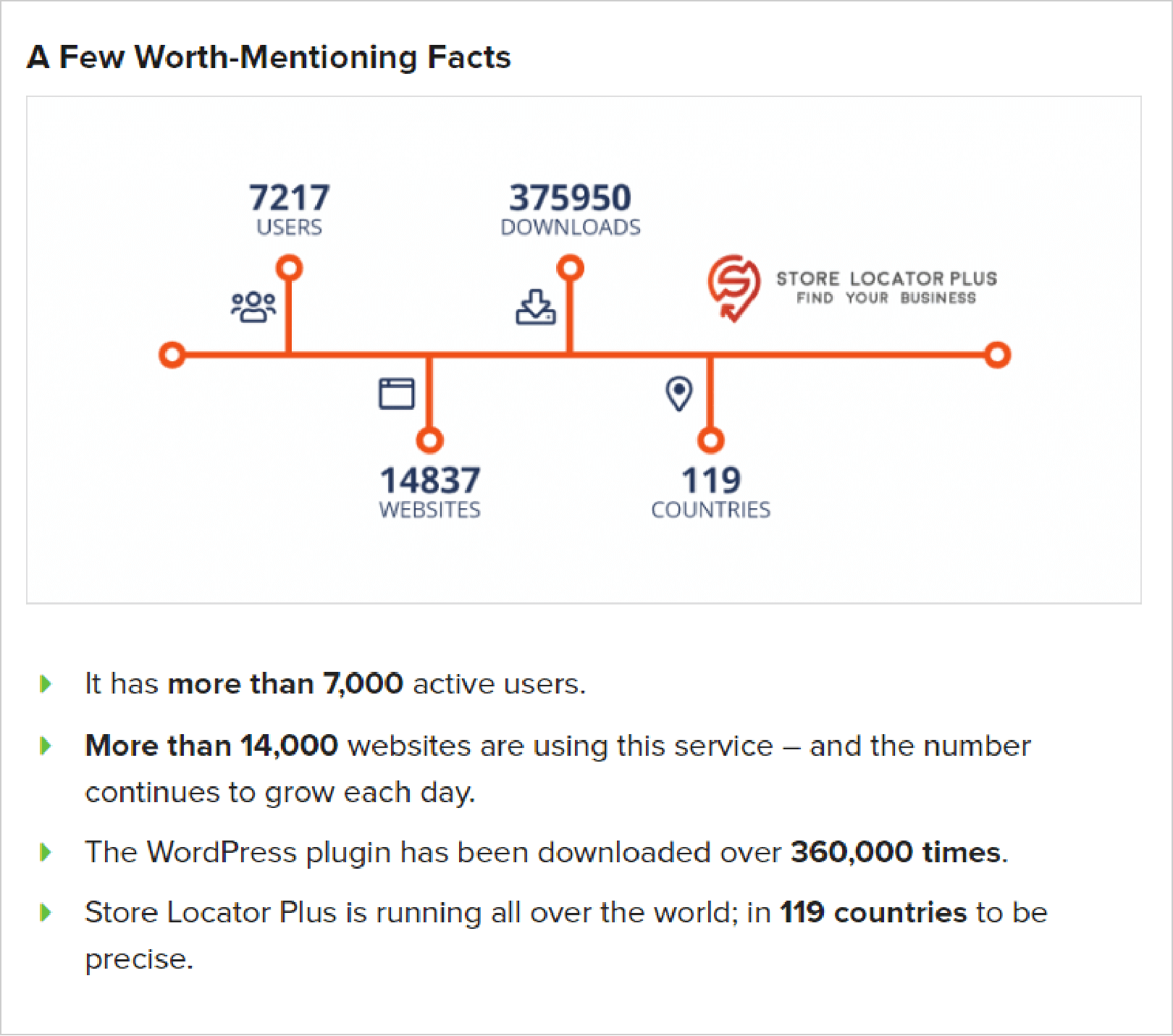Case studies are a major content strategy and the one most closely related to conversions. They are a vital opportunity to showcase how your WordPress company delivers what you promise and are a powerful tool for winning customers’ trust.
In the B2B context, case studies help accelerate leads the most. (Marketing Charts, 2018)
Back in 2018, DevriX published a practical guide on how to write a case study for a B2B company. It was intended as an evergreen 101 publication to teach you about the structure of a B2B case study. It included the steps to take for its completion, things to avoid and tips to follow.
The present post comes as a sequel. It covers the aspects regarding case studies for web projects and the WordPress company in particular. It also shares DevriX experience and gives some examples.

Why Case Studies for a WordPress Company?
While you can easily demonstrate and objectively evaluate physical products and goods, this is not the case with most services. That is the main reason why case studies are a common strategy for B2B companies that provide services (as opposed to B2C entities, selling goods.)
Services are related to the method of their delivery. There is often a lot of communication needed and the perceptions of the results and experiences are quite subjective.
WordPress design and development is a complex custom service. — Even more so for medium and large scale websites, where often whole teams are involved on the client’s side. When selling a web development service, you need to showcase how it will improve and influence the client’s business growth.
Related post: Website Development – a Product or a Service?
How do case studies work? — Case studies are stories that showcase how competent and experienced your WordPress agency is. They engage your prospective clients with all the details of your work process, from the first contact to milestone reached together.
Customers buy only goods and services they can visualize and/or relate to. — Simply said, case studies answer the question “What will happen if I buy this service”. This question is related to the stage of consideration and the actual purchase of a service.
The Business Value of Case Studies
Generating new leads — As discussed above, case studies are most effective in the sales process. They are the easiest and most positive way to demonstrate to targets how their problems will be solved and how they can become the heroes of a success story.
Celebrating the relationship with the client — When you write about the success you reached together, you make the bond even stronger.
Increasing business with the client — The positive experience shared and recapitulated in a case study is an excellent opportunity to upsell services. If you manage to promote the article and make an impression in the media, the happy client would give you more business much easier.
Serve as recommendations – Case studies work as recommendation letters from your current clients to prospects. It is quite common that clients from the same industry choose the same service vendor because they’ve heard about a great project completed.
That is why many WordPress companies have portfolios with categories, based on the customers’ industry.

DevriX portfolio has a SaaS category
Why Is It Difficult to Create a Case Study for a WordPress Project?
Let’s briefly look at some of the difficulties one may encounter and how to handle them.
The agency does not feel confident enough to “brag” about a project –– Actually, there is no reason to be shy when you perform excellently. The aim of case studies is to inform everyone about a job well done and the success you’ve achieved.
The client does not see the opportunities — Media attention is always good for most companies. Case studies are about telling the good news that all media loves where both teams – agency and client – are the heroes.They are an opportunity to congratulate the team who handed it.
On the agency side, data is missing about the process, the goals and the results were not documented or the people involved are not available — All these can be serious problems. A case study could be a chance to improve your internal and reporting processes.
The project includes sensitive data for the client — In most cases web development agencies are given access to confidential or sensitive information on the client’s business. However, that does not need to be disclosed in the case study. To resolve this, simply sort out what data can and cannot be disclosed.
Lack of legal permission from the client — WordPress companies do need formal permission to write a case study about a client’s project. It is a good practice to ask for a permission to use the project for marketing and PR purposes when signing the contract with the client.
It takes too much time and effort on the client’s side to evaluate, give feedback, approve and move on with the case study — In this case, it is in your hands to split the process into smaller steps.
- You could ask for a quick client quote and then do some publicity on social media, your blog or a press release. Upon seeing the results, the client may be easily convinced to participate in longer formats.
- Or you can directly interview the client using a podcast. That will save time from working on written material.
- Collect data, prepare all texts and process graphics. When you do all the homework and leave as little as possible to the client to complete, it will be easier to get a simple “Yes”.
Technically complex issues difficult to describe — With web projects, this is quite possible. Remember that the goal of the case study is to make an informative text that is attractive to your target audience and readers. Keep in mind that with web and WordPress projects, it is easy to slip into highly technical issues.
An ongoing project gets continuously updated so a case study is always outdated unless it’s a one-off project. — When working on a WordPress retainer plan, you need to set a clear timeframe – or select a milestone – so that the project gets featured properly.
The Most Important Tip: Always Listen to Your Clients

When working with clients, it is a golden rule to always listen and take into account their feedback. This way you will not only improve your work but it’ll provide for a better opportunity to feature a milestone in a case study.
It is a known fact that customers who are given the option to leave feedback and who know that you listen to them and care about their opinion, remain more loyal to a service provider and are less likely to search for a competitor.
According to the HubSpot’s “Not Another State of Marketing Report” respondents say that:
86% collect customer feedback on a regular basis
68% use customer feedback to make business decisions
If you do not make it a habit to ask for feedback, you will miss not only possible problems on the project but opportunities to create case studies and collect testimonials.
So do implement automated, regular tools for feedback in your communication processes. This will help you out immensely when collecting ideas and material for all kinds of content: case studies, PR material, blog posts.
How to Write a Case Study for a WordPress Project
In our guide on how to write a case study for a service-based B2B company, we covered the process step by step.
Here is some more advice with a focus on WordPress projects:
Client, Project and Milestone Selection
Everything starts with the right choice of work to feature. Your whole team needs to brainstorm and in turn shortlist the projects, clients and milestones to write about. It is also important to include different perspectives.
Let’s take a look at three project categories:
- The exceptional projects – This is where extraordinary results were achieved: you hit a major win. It can be some sort of innovation, experiment or simply outstanding growth or performance of the website or the business due to your build. These case studies will help your company stand out from the competition.
- The typical projects – Make sure to shortlist those that you want to sell on a large scale, and showcase the “bread-and-butter” of your work. Those projects were the ones that your team was most comfortable completing and where they did their best. Those are the projects that best suit the buyer personas of your agency and provide sustainability to your company.
- The projects that made your clients happy – When the client’s initial goals are reached and their problems are solved. Then the work done can be publicly announced. Everyone loves the happy-ending narratives so share more of those.
Defining the Scope of the Case Study
Once you have identified what to write about, you have two main options:
- Design a brief snapshot of your client’s progress since they began working with you.
- Create a longer success story of the client’s growth.
It is possible to have several case studies for the same projects and clients as long as you cover different milestones. This advice is particularly useful for a WordPress company that is just starting out and only has a couple of accounts yet.
Who Is Responsible for Writing

When it comes to writing a case study, the best information source are the people directly involved in the workflow that will be featured. It’s also the best place a draft can come from.
However, that is not always possible or efficient. Web design and development teams have other priorities and more urgent tasks to handle. They are usually not marketing-minded and the opportunity cost of assigning writing tasks to them is very high.
Therefore, WordPress Companies need to make the production of case studies a joint effort, involving the team that worked with the client, marketing people and senior management.
Read more: Web Design vs Web Development: Knowing the Difference
How to Approach the Writing Process

The person nominated to finalize the case study has to do the research on the client and collect all the relevant public data. Then, go to the available in-house documentation and sort out the confidential and non-confidential part.
It is a must to involve an SEO professional in the writing to make sure the publication is optimized and the right keywords are used. SEO professionals will make sure that the topic of the case study corresponds to what your target clients search for.
A best practice for case study writing is to Interview the teammates involved in the project. Here at DeriX, we use internal interviews with project owners to source data and information about a selected project. The sessions are recorded and later turned into drafts.
What Are the Right Questions to Ask About a WordPress Project?
While redesign projects are easy to spot and can be featured with several screenshots, there is a lot more work that goes unnoticed on a WordPress project.
To be able to build a comprehensive narrative with technical content, relevant to the WordPress context, you should utilize the following list of questions when dealing with designers and developers:
- WordPress as the CMS – Was the site migrated from another CMS?
- The WordPress Install – Did you update the WordPress version, the website’s database and files?
- The Hosting – Was it necessary to migrate to a better host?
- The Domain – Did you implement any change to the domain or the URL structures (permalinks) of the site?
- Building a Multisite – As this requires a completely new WordPress install, make sure to ask about multisite
- The Use of Plugins – What new plugins did you add to the project? Did you customize them? Did you upgrade or remove any?
- Performance Optimization – Often the site’s look and feel stay the same while almost the whole code is improved or replaced. Make sure to ask about any changes on the code, the file structure of the site or other back-end work that could be invisible for users.
- The Challenges – Ask about the difficulties found in the design, development and content-wise;
- Theme and Plugin Customization – There is a huge variety of WP themes and plugins to customize and make each site unique.
Do a Before and After Comparison
An easy approach is to make a list with two columns – Problems and Solutions. This way you may visually present the work you have completed and the benefits to the client.
Add Success Indicators
Case studies are all about success. And it is essential to measure and emphasize each success in short and powerful words, images and data. Proof of success is usually mentioned or highlighted in the title and the summary of the draft.
Some ideas might include website performance indicators like page speed and load, Google analytics data, sales KPIs like leads and conversions.

Success Indicators on My Store Locator Plus Case Study
How to Use the Case Study When Completed
The goal is to show your prospects how you work and to see If they can relate to the story and imagine themselves working with you. Then it will be really easy to close the sale.
Case studies are the perfect tool to use to boost the quality of sales proposals, build your web design portfolio, and add credibility to your portfolio website.
Here is how to use this type of content once you have it collected:
- PR publications on external media
- Add to your website’s portfolio
- Share on social media
- Send to selected leads
- Circulate internally as kudos to boost team morale
- Add to documentation as know-how for future projects.
NDA Case Studies
It is always possible that your client has some good reasons not to disclose their brand name and other company information. Sometimes – especially with big brands and companies – the whole approval procedure is long and complicated. Or it is their policy not to be featured in case studies.
It is also common that the data you have chosen to prove the success of the project is private and cannot be used. For example, if you want to showcase a website’s increased monetization, it is only normal for the customer to object.
Also, if your software build is related to a confidential functionality like the payment process of a shopping website, a bank calculator or any type of personal data, the only way to publish a narrative about your work is to anonymize it.

Financial services development often requite full confidentiality
Bottom line, it is always better to have an NDA case study than none at all. Just make sure when you anonymize the information, not to leave too many clues so that it becomes obvious which project you write about.
Conclusions
The best case studies work beyond the explanations behind the design, UX and development decisions. They offer a client-first perspective into the technical process that, ultimately, makes your WordPress agency’s work easy to comprehend. This leaves you in a better position to prove your company’s work value, support your price and sell services to even the most doubtful client.





